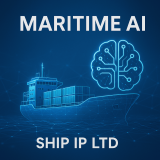The COVID-19 pandemic has seen classification societies around the world adapting their services to cope with global travel restrictions, allowing inspections to be conducted remotely and for more services to be available online. For the Korean Register, increasing digitalisation and embracing new technologies has been a long-held strategy and the society quickly adapted its services to support customer’s business operations in these challenging times.
KR’s remote survey service was launched over a year ago and is well established, conducted via bi-directional communication with a vessel, by sharing photographs, video contents and digital images from the ship. It can be completed effectively and confidently anywhere in the world without requiring a surveyor’s attendance on board.
Travel restrictions as a result of COVID-19 have prevented KR from conducting some physical surveys and the need for social distancing has made it impossible to send surveyors on board ships. In these cases, KR has been granting extensions for one month or the period of a voyage to the next port, whichever is longer, in close consultation with the relevant flag administrations. In addition, KR has been using a range of remote survey techniques which have been undertaken with the authorization of the respective flag administrations.
Since the global pandemic was declared on 11 March 2020, KR has conducted a range of surveys remotely including; continuous machinery survey (CMS), 3-month extension of shaft survey, 3-month extension of boiler survey, minor damage survey, Outstanding Condition of Class (COC) or confirmation of repairs done for deficiencies or corrective actions. Overall, the number of remote surveys conducted by KR since the beginning of the pandemic has increased tenfold. KR is now working to include the inventory of hazardous materials (IHM) surveys for ships in service as well as all occasional surveys in its remote survey range.

Mr Hyung-chul Lee, Chairman and CEO of Korean Register
KR has – where needed – granted force majeure extensions for vessels scheduled to dry-dock for repairs or renewal surveys in the areas acutely affected by COVID-19. In these instances, KR has liaised with the relevant flag administration to seek their agreement on the extension of the relevant statutory certificates.
The global pandemic is accelerating the pace of change in classification, with digitalization offering new opportunities and the means to adapt in this changing environment. As a result, KR is investing in technology to support the further digitalization of its classification services and has diversified its business portfolio to include third-party certification in the ASME and MED sectors and has increased its naval services to cover a wide range of technical applications ranging from patrol vessels to submarines.
Since 2014, KR has been developing its range of VR (virtual reality) based application systems. These now include a ship inspection training simulator and a ship crew safety training simulator both of which use digital 3D replicas of the relevant ships, and KR has further applications in development.
KR has been prioritizing the development and application of innovative information and ICT systems for the maritime industry for some time, such as the use of drones to conduct ship surveys, ship cyber security certification, KR’s 3D based drawing approval, e-certificates and condition-based maintenance (CBM).
Traditionally, design approval of a ship by a classification society has been a paper-based process, involving the exchange of numerous large-format drawings between the shipyard and the classification society. However, KR has developed and launched a 3D model-based (paperless) design approval system which provides a more accurate and intuitive review of ship structure.
E-certificates are already widely used as they offer a more secure way of reducing the risk of falsification. KR is authorized by many flag state administrations to issue e-certificates on their behalf, but KR expects this to increase even more moving forward.
As the shipping industry becomes more and more digitalized, so the number of cyberattacks on shipping companies and ships have increased too. An effective response and comprehensive cyber security protection measures are now essential for any maritime organization.
The classification society has provided cyber security certification services for companies and ships since 2018, and cyber security type approval services for ship networks and automated systems in compliance with IEC 62443 4-2 and IEC 61162-460 standards since 2019.
In 2021, the International Maritime Organization’s (IMO) Resolution MSC.428 (98) enters into force, which will further increase demand for company and ship cyber risk management services. As a result,
KR has established a cyber security certification process which is in line with the international security standards – ISO 27001, IEC 62443, the NIST Framework, the IMO and BIMCO cyber security guidelines.
KR’s expert cyber security team is now expanding its technology services to cover the cyber certification of newbuilds and the assessment of software conformity for ships, so its customers can respond quickly and effectively to any cyber security challenge as it arises.
Looking ahead, KR expects that, as a result of the global pandemic, there will be a significant drop in global trade which will affect cargo carried. This will lead to over-capacity in the market which will lead to an increasing number of lay-ups and scrapings – all of which will affect the work handled by KR.
But with the global population continuing to grow, it’s expected that long term growth will return. During this time, KR will continue to increase the level of digitalisation across its organisation and services and will apply new technologies to support customers businesses no matter what the challenges.
Source: By Mr Hyung-chul Lee, Chairman and CEO of Korean Register, arranged on behalf of Hellenic Shipping News Worldwide (www.hellenicshippingnews.com)





